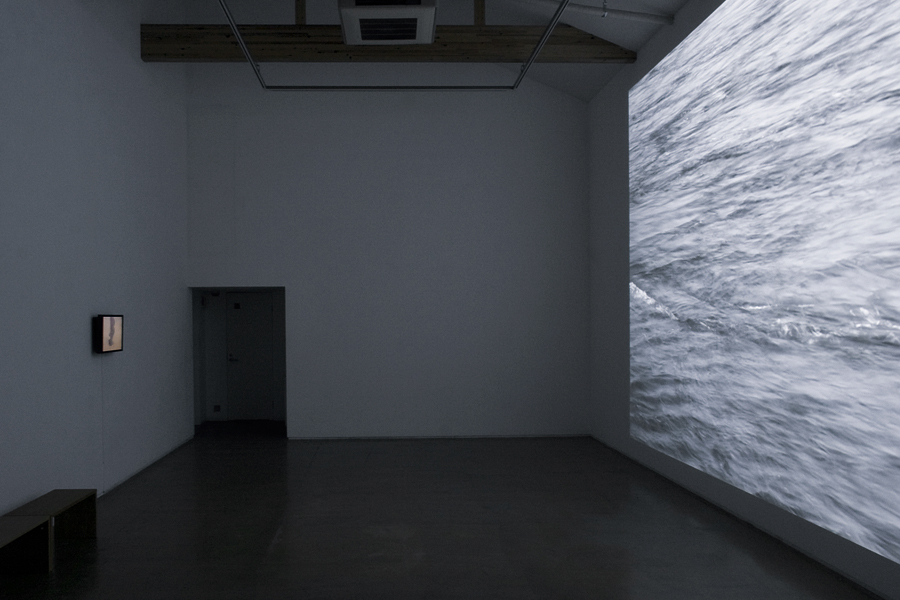←
“I don’t like phenomenology.” About 10 years ago a curator told me. It was about the same time in other occasion when I heard a critic said “This is not phenomenological.”
I see. Phenomenology is not so welcomed in the art industry. I felt uncomfortable, because phenomenology was a starting point of my philosophy. With that in mind, I asked the reason why the curator disliked it. “It’s because phenomenology is ambiguous”. I recall the answer was like that. Why ambiguity makes them awkward? I did not go into details to ask for more reasons or confirm if such evaluation is common in the industry overall. However, I mentioned about this story because the artworks of Motonori Inagaki are very phenomenological, not because they are ambiguous. For example in phenomenology, we attempt to address ambiguous matters such as the transition of wind or light by every moment, atmospheres that cannot be captured visually or emotions and feelings. Or, “something” ambiguous that slip through such definition, “something” only can be experienced through ambiguity, and “something” that escapes into ambiguity as we look back.
“Something” that cannot be talked about without ambiguity is our most familiar daily life and in fact the most realistic experience. Phenomenology is a philosophical approach trying to grasp them. It’s not an approach if we call ambiguity just simply as “ambiguity”. We should rather not get into it if we attempt to replace ambiguity with different things. Phenomenology is alluring because of this sort of thrilling subtlety. I feel the same lure to Inagaki’s artworks.
And of course, I love Inagaki’s artworks for such reasons.
Takashi kurata (Philosopher)
「現象学は好きじゃありません」。
もう10年近く前になるが、某学芸員からそういわれたことがあった。「これは現象学的ではない」。別の機会に、ある批評家が、そう作品解説するのを耳にしたのも、ちょうどそのころ。そうか、アート業界では、現象学ってウケないんだ。居心地の悪さ――というのは、現象学は僕の哲学の出発点でもあったから――を抱きつつ、件の学芸員に理由を尋ねてみた。「だって、現象学は曖昧だから」。たしか、そんな風な返答だった気がする。 どうして曖昧さがけむたがられるのか、それ以上つっこんで詳らかに聞いたわけではないし、はたしてそういう評価が業界全般に共有されているものなのかも、確認したわけではない。けれども、あえてこんな話をしたのは、稲垣元則の作品が、きわめて現象学的だからだ。曖昧だからではない。曖昧な事象を扱おうとするのが現象学だからである。
たとえば、時々刻々と変化する風や光のうつろい。あるいは、視覚では捉えようのない雰囲気や空気感もそうだし、気分や感情もそうだろう。いや、そもそもそうした名指しをスルリとすり抜けてしまう、曖昧な“何か”。曖昧さの中でしか体験できない“何か”。振り返った途端、曖昧さの中に逃げ込んでしまう“何か”。
曖昧さを抜きにしては語ることができない、そんな“何か”こそが、僕たちにとってもっともなじみのある日常であり、じつはもっともリアルな経験といってもいい。それを捉えようとするのが、現象学という哲学的探究である。曖昧なものをただ「曖昧」というだけでは探求にならない。でも、曖昧さを別物にすり替えるぐらいなら、いたずらに手を出さない方がいい。現象学の魅力は、こうしたスリリングなまでの機微にある。それと同じ魅力を、僕は稲垣の作品にも感じる。
もちろん、そんな稲垣の作品が僕は大好きである。
鞍田 崇 Takashi Kurata (哲学者)

←
←
motonoriinagaki.com
Copyright © 2012 Motonori Inagaki All Rights Reserved.
